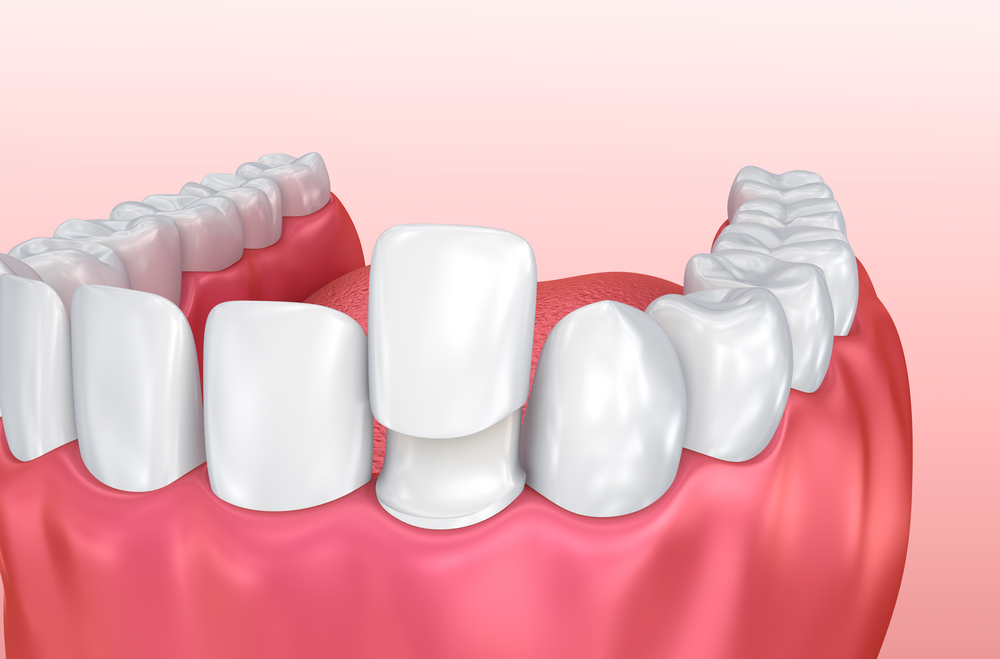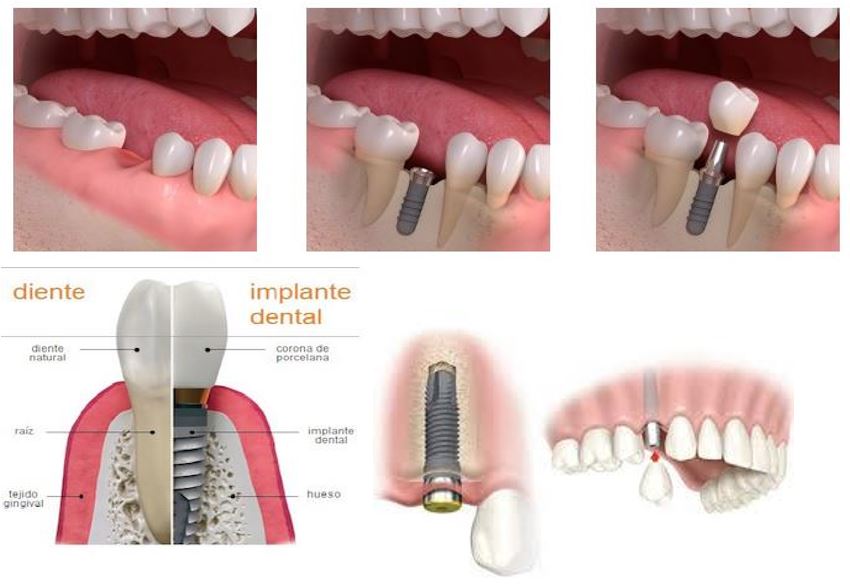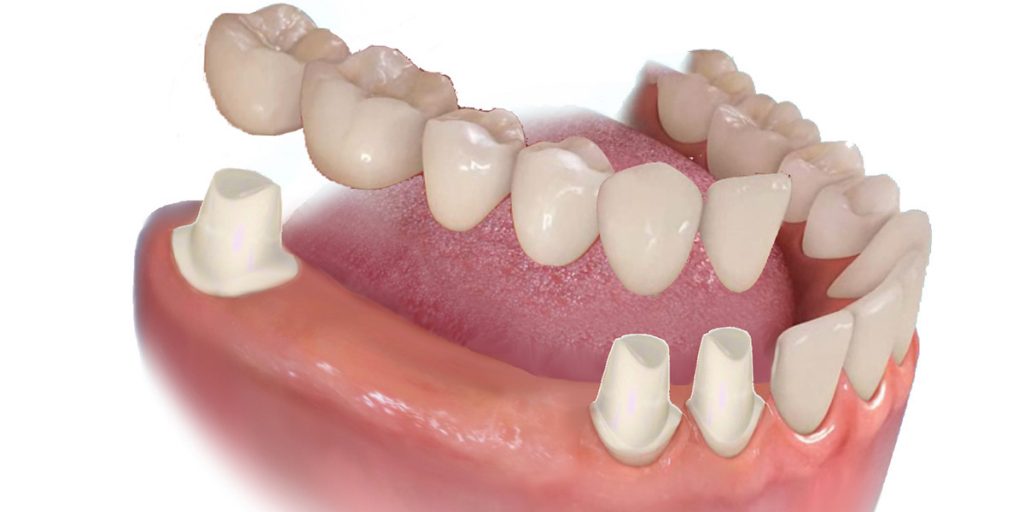

Is a titanium metal rod which is placed into the jawbone. It is used to replace a lost or absent root and support one or more false teeth. Implants bond to the bone by means of a mechanism called bone integration. Usually the permanent teeth are fitted 4 to 6 months after the implants are put in. Implants are not rejected by antibodies because they are made of inert materials, sterile and biologically compatible. Nevertheless they can fail to integrate into the bone. If the implant becomes loose during the healing period or just after, then it is easily removed and healing takes place in the normal way. Once the jaw has healed, another implant can be placed there. Indications: - Patients with some remaining bone still there. However, new bone-grafting techniques allow replacement of the missing bone. - Compensated systemic diseases, such as diabetes, heart conditions, high blood pressure, osteoporosis. Counterindications: - Non-compensated systemic diseases. - Drug abuse, alcoholism or smoking. - Recent x-ray exposure. - Psychological pathologies (when the patient cannot keep a proper dental hygiene). - Infections within the oral cavity. Procedure: placing dental implants normally involves two steps: 1° Step.- Surgery: Placing the implant (one or more, depending on the kind of prosthesis) needs a small operation. This can be done using a simple local anaesthetic. The dentist may give some pain relief and may also prescribe antibiotics after the surgery. The patient can go back to his/her normal activities after the first 24 to 48 hs, depending on the case. The implants need to bond (integrate) with the bone after they have been put in. This takes 4to 6 months. In the meantime, crowns, bridges or dentures can be used. 2° Step.- After 4 - 6 months: Placement of pins and prosthesis. - Replacement of implant caps with healing caps (15 days after). - Dental impressions are taken to make the pins and prosthesis (fixed or removable) which will be supported by the implant. - Permanent teeth are fitted. Advantages and disadvantages: Dental implants are the best alternative to regain the normal function of the missing teeth and the mouth: Neighbouring natural teeth are not affected by the implant. Provide a stable support for removable prosthesis. Improve speaking. Facilitate proper chewing. Prevent bone resorption. However, there are some disadvantages: There might be infection in the area, mainly in smoking or decompensated diabetes cases. There can be damage to the nerves in the lower jaw and there can be damage to the maxillary sinus. These complications are rare. Higher cost. Type of prosthesis: Individual crown, Bridge, Removable Prosthesis. After care and hygiene are essential for long-lasting, successful implants.


Non-removable dental prostheses are solidly attached and cannot be removed by the patient. The main requirement is the proper condition of the root. There is a wide variety according to the type and number of teeth to be replaced. They might be: - Crown: individual fixed restoration which replaces the crown of a damaged natural tooth. It can be bond to a vital tooth, over a pin, abutment or implant. Crowns can be made from many materials: all porcelain (strictly aesthetic) porcelain over metal, metal with acrylic (not very aesthetic due to staining), noble metal (gold alloy), nickel alloy (silver-coloured), etc. - Traditional bridge: a dental bridge replaces one or more teeth that are missing between several other teeth that are sound. Neighbouring teeth must be carved and if they are sealed they will need root canal treatment and pins to enhance retention of the bridge. - Maryland bridge: it is normally used to replace a front tooth. The missing tooth is replaced and bonded to a thin metal plate imitating the lingual or palatal face where it will be cemented with composite resin cement. - Cantilever bridge: a cantilever bridge is a fixed bridge that attaches to adjacent teeth on one end only. The neighbouring back tooth is used as abutment.
